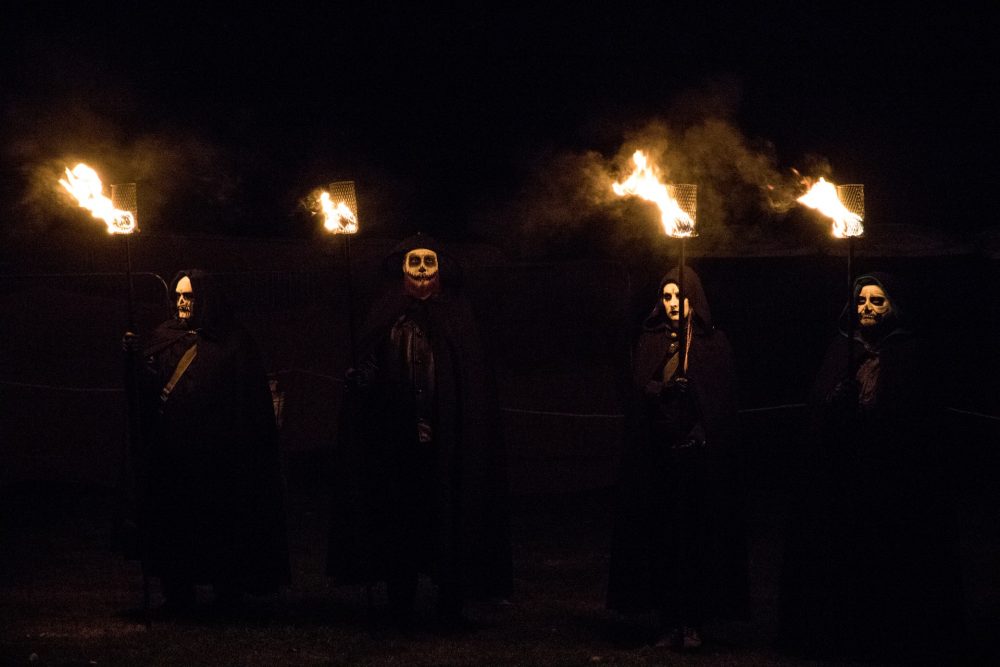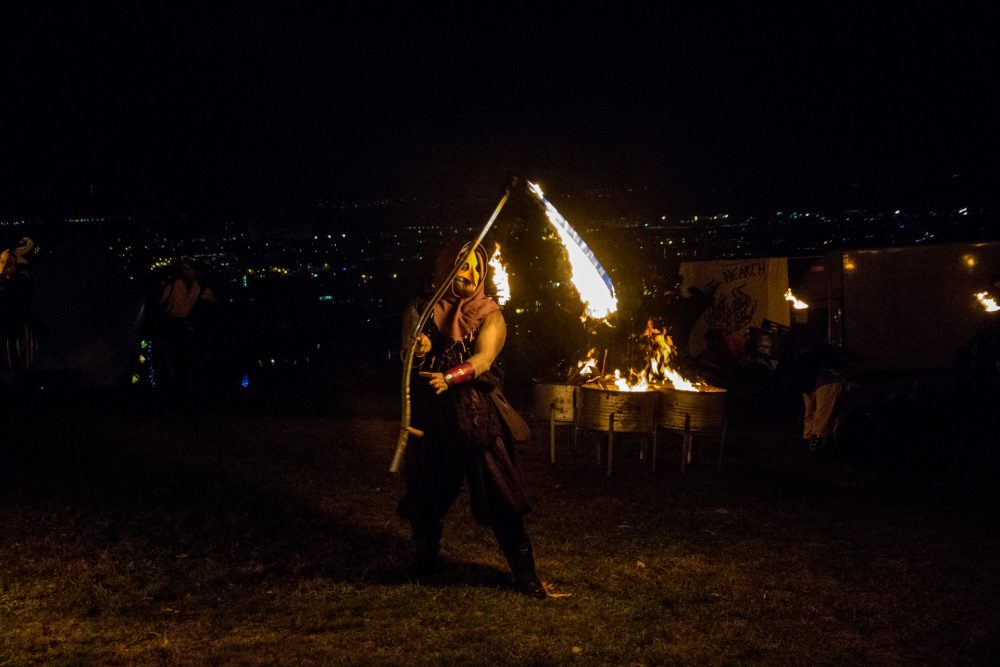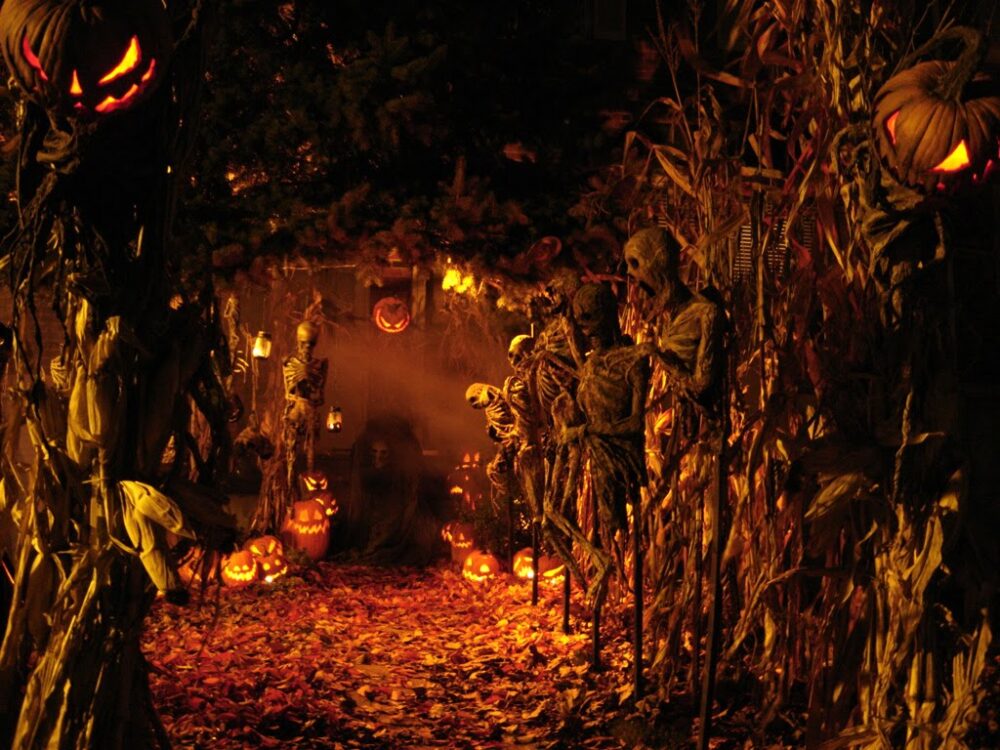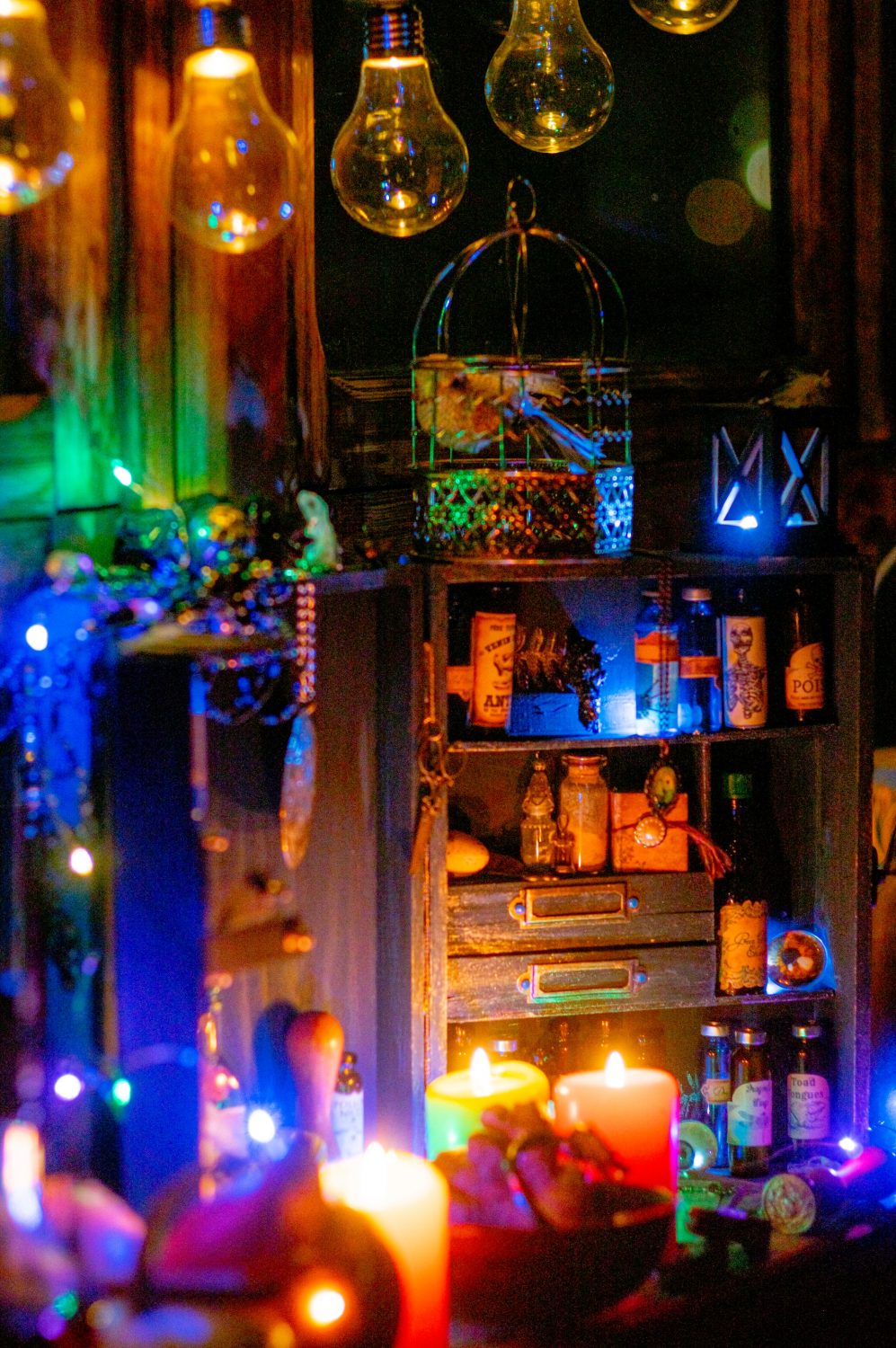It’s that time of year when the wind begins to whip, darkness takes over the light, and the shadows begin to creep. Halloween, now a very commercial holiday, has a much deeper and darker origin.
Today we look at that origin, the Samhain traditions, and how Celtic Ireland still remembers this ancient event.
A long-time friend of The Fairytale Traveler brings us this piece of Irish heritage from the ‘Emerald Isle’ itself, Mr. Ed Mooney. He shares with us his Samhain Traditions leading to the origins of Halloween costumes and trick-or-treating.
Many fantastic stories relate to this time of year, from the shidhe rising from their dwellings to tales of other-worldly encounters, ghosts and haunting’s, etc.
So many, in fact, I could write volumes of books on the subject, but for now, I shall concentrate on a few nice little traditions which I had when growing up.
Apart from being a New Year’s celebration or Harvest Festival, which predates the arrival of the Celts in Ireland, Samhain is a special time where the past, present, and future all become intertwined.
The dead and the Other World inhabitants are free to walk among the living during this time as the veil that separates our two worlds is at its thinnest.
Whilst our ancestors had a healthy respect for the dead, not all other world visitors would be welcome.

Samhain Traditions
Ancient Flames at the Hill of Tara and Dressing Up
The first and possibly most common was the bonfire, a continuation of an ancient practice where a sacred flame would be taken downstream from Tlachtga to the Hill of Ward, where the fire would be light from the sacred flame.
The Bonfires of old were believed to keep the evil spirits away, and people would dress in disguise in the belief that spirits of ill intent would not recognize them.
Kids originally dressed up as ghosts, witches, and monsters to go out ‘Trick or Treating.’ People did this to disguise the living from the dead. From Tara, all other fires across the country would be light on this night.
There are also claims that the flame was part of a purification ritual, later on, it seemed that the Celtic version of Christianity had some influence on tradition, in that the flames of the fire would ward off the evil spirits of the dead who could come into our realm at this time of year.

The Dumb Supper
One of my personal favorite traditions is the Dumb Supper. Whilst some say its purpose was to appease ancestral spirits who may decide to return to the family home, my understanding and the way I practice it involves setting an extra space at the dinner table for any ancestors who wish to return for the night.
I see it as a symbolic mark of respect for the deceased family members. Some people will have their meal in silence hence the name Dumb Supper, but I prefer to have discussion and banter at the table.
I seriously doubt a returning spirit will want to come back to a solemn and boring dinner table. With its origins firmly steeped in Irish Tradition, there are similar practices in other cultures.
Though I have noticed that many pagan traditions have absorbed the practice of the Dumb Supper, and there are many different variations and ways in which it is carried out.
My personal opinion is that there is no right or wrong way to hold a dumb supper once it is done for the right reason, which is to celebrate and remember lost loved ones and family members.
The Origins of Trick or Treat and the Jack-O-Lantern
The tradition of going from door to door receiving food existed in Ireland in the form of “souling,” where children and poor people would sing and say prayers for the dead in return for something nice.
We now have come to know this as ‘trick-or-treating.’ Then, we have the popular carving pumpkins, which originated from an old Irish tale about a man named ‘Stingy Jack’.
The tradition was brought to America by Irish migrants who would have used large turnips. It then progressed to pumpkins in the form of the modern-day ‘Jack O Lantern.
So, now you can see where a lot of present-day Halloween traditions have evolved from. These are ancient traditions which, have turned into a bit of a marketing frenzy.
Still, celebrating Halloween is fun, just the same. If you’re ever in Ireland this time of year, try making a trip to the Hill of Tara for Halloween to see for yourself Samhain traditions and where our charming little Halloween Holiday really began.




3 Comments
Pingback: Very cool reblog | Cerulean Starshine
Pingback: The Legend of Trick or Treating and Where Its Really from
Pingback: 100 Photo Travel Guide to 13 Spectacular Places in Ireland's Ancient East